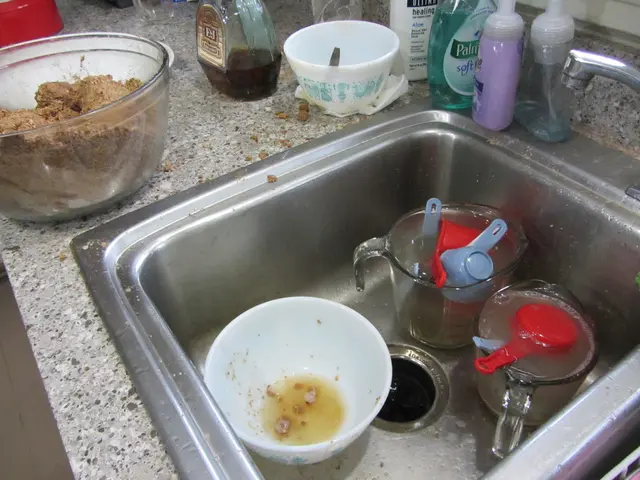Choosing an Appropriate Medium for Venus Fly Traps: Selecting the Perfect Soil and Containers
Author* Recent Posts
Larry "The Jungle Whisperer" Meyers For over a decade, I've been taming green giants and transforming backyards - I'm the man behind every lush lawn and blooming plantscape! I pride myself on sharing my gardening secrets and creating an ultimate hub for all gardening enthusiasts. Latest posts by Larry Meyers (see all)* Snail Bait Safe for Dogs: Tips for a Pet-Friendly Garden - June 9, 2025* Harvest Your Halloween: When to Plant Pumpkins in Michigan - June 9, 2025* Tulip Blossoms in Missouri: When and How to Plant for a Stunning Show - June 9, 2025
Venus flytraps, with their carnivorous charm, are a fascinating challenge in the botanical world. These platonic wonders capture our imagination with their trap-like leaves that snap shut on unsuspecting prey, all while surviving in acidic and nutrient-poor environments. For caretakers committed to their survival, nailing the right soil mix is a must.
Quick Answer To keep your Venus flytrap thriving, blend sphagnum peat moss and perlite or silica sand in a 1:1 ratio. Remember that these exotic plants crave low-nutrient, acidic conditions.
Get that soil balance right, and you'll provide the perfect base for ideal moisture and aeration. When it comes to my personal preference, I reach for sphagnum peat moss combined with horticultural sand to achieve an optimal blend and reflect the flytrap's natural, nutrient-deficient habitat. And hey, if you're up for it, adjusting the ratios to suit your potted Venus flytrap can be a pleasant diversion.
CautionRemember: Avoid regular potting soils or fertilizers; they'll harm the plant. Go for a Venus flytrap-friendly soil blend free of added nutrients and minerals.
Meet Your Venus Flytrap: The Ultimate Guide
- Cultivation and Care Tips
- Soil, Potting and Preparation
- Light and Temperature
- Watering and Humidity
- Feeding and Nutrition
- Prey Signals and Trapping Mechanisms
- Nutrient Requirements
- Propagation and Repotting
- Division and Cloning Methods
- Re-Potting at the Right Time
- Venus Flytrap Challenges and Solutions
- Dormancy and Seasonal Care Tips
- Pest Control and Disease Management
Cultivation and Care TipsWhen it comes to cultivating Venus flytraps, it's all about the trifecta of soil, light, and water - let's dive into each facet.
Soil, Potting and Preparation
The Perfect Mix Meat-eating plants rule out nutrient-rich soil. Go for a 1:1 blend of sphagnum peat moss with perlite, silica sand, or pumice for the ideal combination of moisture retention and aeration. You can find specialized blends for carnivorous plants to save you the fuss, including ingredients like charcoal for kilobytes of additional benefits.
Light and Temperature
Light Requirements The Venus flytrap craves bright, indirect light. I recommend positioning it on a north-facing window or under grow lights for that perfect combo of light and shade. As a general guideline, aim for at least 6 hours of sunlight daily.
Watering and Humidity
Watering Requirements The key to watering is to keep it consistent and shallow. You can hydrate your plant using rainwater or distilled water to avoid adding minerals that can harm the roots. I water my Venus flytrap once a week, and sometimes more if the soil dries out between waterings.
However, Keep an eye out for root rot, which can occur when the soil stays soggy for too long. If you notice fungus or the leaves yellowing, it could be a sign of overwatering.
Namaste, Feeding Time
Venus flytraps rely on a diet of live prey to meet their nutritional needs.
Prey Signals and Trapping Mechanisms
It's fascinating seeing these carnivorous plants chow down, as they encapsulate insects with their unique trap mechanisms. The Venus flytrap's sensitive trigger hairs lie curled on the inside of each leaf, waiting for prey to touch them twice, at which point the leaf snaps shut - locking its entrapped hunter inside.
Nutrient Requirements
Feeding schedule: In the growing season, feed your Venus flytrap once a week, with a meal that's a quarter of the leaf's size. Three to four weeks during the winter months are sufficient.
RememberStick to their natural diet - any tackle box will do!
Propagation and Repotting
When it comes to multiplying the number of Venus flytraps in your collection, there are two main methods: division and seed propagation.
Division and Cloning
When you split a mature Venus flytrap rhizome, you'll get new, independent plants, each with several healthy leaves and a portion of the root system.
Re-Potting
A rhythm of spring or early summer re-potting is ideal for Venus flytraps while they're in their growth cycle. I repot every 2-3 years or when signs of overcrowding or soil deterioration appear. During the re-potting process, I always use a soil mix tailored for carnivorous plants for consistent growth.
Soil Mix Keep it simple and bring on the yields –– a 1:1 ratio of peat moss and perlite, always nutrient-free, will delight that callused Venus flytrap.
### Venus Flytrap Challenges and Solutions
Managing the Venus flytrap journey isn't without its obstacles. Leaves that turn yellow, pests, diseases, and dormancy can all throw a wrench in your plans. Let's take a look at how to stay on top of these tricky situations.
### Dormancy and Seasonal Care Tips
Understanding Dormancy
Once the frosty winds of winter approach, it's essential to prepare your Venus flytrap for a well-deserved hibernation. This perennial needs downtime to conserve energy, especially for specimens native to South Carolina, where chilly winters can be expected.
Here's how you can prep your Venus flytrap for a cozy rest:
- Cut back watering gradually as autumn progresses, while ensuring the soil doesn't completely dry.
- Move them to a barely-bit-chilly spot that mimics their natural environment, like a cool, unheated room below 50°F (10°C).
Dormancy can be a bit of a rollercoaster ride for any grower. It's all about achieving the delicate balance between neglect and care.
Pest Control and Disease Management
Battling Pests and Diseases
Even the carnivorous Venus flytrap can fall prey to pesky pests and sneaky illnesses. Fungus gnats are common culprits when it comes to nibbling on your Venus flytraps, but fear not, I've got some hacks to help you fight back.
Inspect Regularly
Keep a vigilant eye on your plants during the active growing season for signs of pests or diseases.
Yellow Sticky Traps
If you spot fungus gnats invading your plantscape, invest in yellow sticky traps to help curb the infestation without using any harmful chemicals.
Pests and diseases can be an inconvenience, but with a little vigilance and the right tools, you can stay on top of them. So, happy hunting, and may your Venus flytraps flourish!
- When entertaining the idea of a home-and-garden project, growing Venus flytraps can be an appealing choice, especially for those interested in unique gardening challenges.
- In maintaining a lifestyle that flourishes in home-and-garden projects, adding a Venus flytrap section to the garden could be an engaging add-on, requiring horticultural skills and caretaking for these carnivorous wonders.








